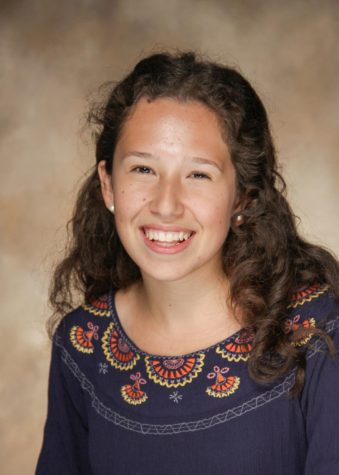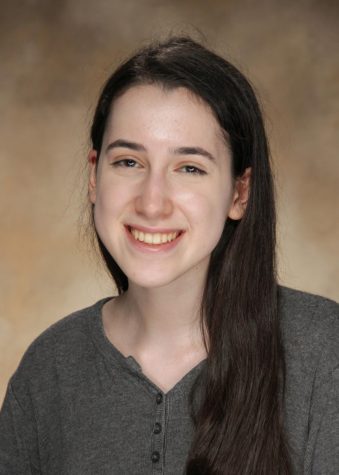

April 5, 2017
Since ancient times, the population of what is now approximately 14 million Jews has been divided into many denominations. This variety of denominations can make it difficult to find a place that is accepting and open to all.
Pluralism can be found throughout the Jewish community and is one of CESJDS’ eight core values. The school website defines it as a “principled commitment to the diversity of Jewish backgrounds, beliefs and practices of our community of students, teachers and parents.”
JDS students are told to “unite through our shared values and cultivate respect and knowledge inspired by our differences.”
To Director of Jewish Life Stephanie Hoffman, a pluralistic school often involves exposing students to contradictory views, which can be enriching. Even if students disagree with someone’s view, if they have an understanding of where the other person is coming from, they can be pluralistic and deepen their understanding of their own beliefs.
“I think that it makes that person educated, aware and able to make choices as opposed to the choice just being the default,” Hoffman said.
In a classroom setting, Hoffman said that pluralism creates a “space of exploration” that employs the different backgrounds two students come from.
“We have to really step back from our own beliefs and say that ‘if I’m going to sit and engage with this person, I need to understand what they’re saying,’” Hoffman said. “I might disagree with it, but I can only disagree with it once I understand it.”
In the school community, Hoffman finds that there are both areas that involve pluralism and those that do not. After sixth grade, Z’man Kodesh becomes diverse rather than all-inclusive. In the younger grades all students, regardless of Jewish practice, are combined into one prayer service. The array of Z’man Kodesh options in the Upper School curriculum, however, allows students to pick the option that best suits them, regardless of others’ beliefs.
When it comes time for communal activities, Hoffman said that the school chooses to remain pluralistic and create an environment where students with various traditions can coexist. One aspect of this is that no matter personal or familial Shabbat observance, students maintain a Shabbat-observant environment in public areas on shabbatons.
In youth groups
The idea of pluralism is widespread in Jewish organizations outside of the school. One of these organizations is BBYO, a pluralistic Jewish youth group for students in eighth through twelfth grade.
For Margot Bartol, BBYO D.C. Council Vice President of Jewish Heritage, BBYO’s pluralism policy yields a similar result as JDS: an environment where students have the ability to talk with each other about their beliefs or practices, even if they may be different than their own.
BBYO opens its membership to Jewish teens from all denominations, which makes BBYO pluralistic by definition. Bartol said that the inclusiveness of the organization keeps it that way in practice. Along with diverse options for prayer services, the organization makes accommodations for those who keep kosher or want to remain Shabbat-observant at conventions.
“We make sure that anyone of any type of Judaism gets the experience they want and can learn about others as well,” Bartol said.
In policy, BBYO takes the position of leaving religious practice decisions up to students rather than mandating it. Unlike at JDS, kippot are not required to be worn during BBYO events. This policy is aimed to make those who are more secular feel comfortable and to not “force anyone to do anything if they don’t really believe in it,” Bartol said. For those who want to wear kippot, they are nonetheless encouraged to.
Bartol said that while she would go “out of her way” to make everyone feel religiously comfortable at a convention, it cannot always be done. Small mishaps, such as kids not being able to get to their rooms without riding on an elevator on Shabbat at one of the conventions, highlight the organization’s difficulty catering to the more orthodox side of the religious spectrum.
As a Reconstructionist Jew, Bartol feels largely comfortable in a more open environment. For more observant Jews, however, the lack of representation in a more pluralistic environment means that services with a mechitzah or full Conservative prayer services at conventions are often not successful.
While BBYO maintains a pluralistic approach to Judaism, other Jewish youth groups, such as the National Conference of Synagogue Youth (NCSY) are not pluralistic. NCSY is an Orthodox youth group, meaning that its policies and procedures regarding Judaism follow those of the Orthodox Union.
Junior Ilana Jach has been a part of both BBYO and NCSY and prefers NCSY. She nevertheless sees a greater similarity between the way JDS and BBYO approach Judaism than the way JDS and NCSY approach it. She believes that pluralistic spaces can be valuable for some, but that they sometimes do not help individuals to grow their connection to Judaism.
Jach found that at NCSY there were students from a range of different religious backgrounds, though the majority were Orthodox. She also saw the mentors, college-aged adults who participate and lead the youth group, as “not judgmental at all,” and part of what made NCSY feel like a more open environment to her.
“NCSY is a place where I have grown so much,” Jach said. “You learn a lot about yourself and your relationship and connection to God and [your] Judaism grows a lot.”
BBYO member sophomore Jake Block finds more meaning in being able to express Judaism at his own comfort level. While he acknowledges that both BBYO and JDS are pluralistic spaces, he believes that BBYO does a better job of being truly pluralistic due to its more lenient policies and ability to let the members choose how they want to participate in Jewish activities.
“In BBYO, you don’t necessarily express yourself as Jewish,” Block said. “You could walk around with a bunch of your BBYO friends doing a program and no one would know that you are Jewish.”
Even with this freedom, Block’s chapter still tries to incorporate Judaism-based discussions into some of their weekly programs. In those discussions, Block finds the range of opinions on what it means to be Jewish or the effects of anti-Semitism to be meaningful.
According to Block, having a pluralistic institution such as BBYO is necessary for a pluralistic community. While pluralistic values may come from the people, it is the pluralistic institution that puts these values into place.
At summer camp
Though students are away from school in the summer, differing approaches towards engaging with diversity still surface in camps. Junior Matthew Landy attended both Capital Camps and Camp Modin, which consider themselves pluralistic, in addition to Camp Ramah New England, which identifies with the Conservative movement.
In all three, Landy said there were a variety of Jews from different denominations. In terms of policy, while Landy appreciated the laid-back environment at Capital Camps, he found that his experience at Ramah was more religiously meaningful. He said that at Ramah, most activities related back to Judaism in some way and the camp still was inclusive and made him feel “at home.”
“I think that having different groups of different denominations is a good thing, not just expecting everyone to come to one prayer service and expect them to fully participate even if they do not believe in that kind of Judaism,” Landy said.
To Landy, both camps treated a Jewish community in a similar way with regard to pluralism because they both tried to allow students to feel comfortable in their beliefs and how they express themselves, such as by offering various prayer options. Despite this desire for comfort, Landy said that part of a pluralistic environment may involve stepping out of one’s comfort zone and experiencing the way others practice.
For Hoffman, actually stepping out of one’s comfort zone is not necessary for a pluralistic community, but an openness to others is. In a school environment, Hoffman said, pluralistic students are those who strive to go beyond learning about other’s perspectives and then moving on; they engage with other’s ideas by asking questions about someone’s differing beliefs and practices, and try to understand them and interact with that person based on that understanding.
“I think the goal is to take this diversity and engage with it in ways that allow each student to grapple with these differences, to grapple with the different approaches and come to their beliefs on it,” Hoffman said.
While it may be impossible for a community to maintain a pluralistic environment in all of its areas, such as prayer service, Hoffman said that the goal of a pluralistic community is to create those pluralistic individuals who accept and respect different opinions.
“Not every person who attends a pluralistic institution will end up being a pluralistic individual but the exposure to that and the training in how to engage can help lead somebody to become [pluralistic],” Hoffman said. “That’s the value of a pluralistic institution and a pluralistic day school.”

